Talkative walks and mud brick domes in The Amalgamated Aggromulator
- June 1, 2016, 12:34 a.m.
- |
- Public

. . . I need to walk faster.
When I’m walking in flip-flops I naturally walk a bit more slowly than when I’m wearing regular shoes and can let my strides swing out. So today I was wearing flip-flops, and I was walking along down a stretch of road, and I noticed a flicker of motion just to my left. It was a fellow pedestrian slowly passing me on the sidewalk, walking perhaps 1/5th of a mile per hour faster than I was.
He pulled slowly ahead, wooden-faced. And then a woman appeared behind him, walking at the same pace, moving very slowly past me, and then a third person.
The thing is, when I am out walking, I routinely talk to myself when I’m thinking about something, though not very loudly. I do it more when I’m amused.
And I had greatly enjoyed the pilot of the gleefully vulgar, hilarious new TV show Preacher (it looks very promising) . . .
. . . and so - at the rate at which those people had been gaining on me from the rear - they had been listening for about ninety seconds to me refining my own delivery of the Irish vampire’s discussion of the “ass hamster.”
This happens to me all the time.
A friend’s mother has just died under senseless circumstances.
Well, I said “senseless” . . . There are very few sensible circumstances where the sensibleness would be worth anything.
Another friend has lost an elderly sister-in-law. Her age is supposed to make that sensible.
Perhaps it does. It is certainly traditional. (I have spoken to people who have in fact taken that view. To my surprise, they reacted with confusion and apparent horror to the suggestion of doubled or quadrupled lifespans becoming possible in the future, not because of any views about population complications or whatnot, but apparently simply because that was not what is supposed to happen.)
It is the country of there-is-nothing-to-say. Or no right thing to say. So anything will do, unless it doesn’t do.
I have known the territory of loss, but it is not the sort of thing that leaves one better-informed. The inside is different from the outside. It is terribly awake in there, and that is all I know.
(It is a weary thing to try to say something about.)
Neither of these were the sort of thing where my thoughts about heroic measures that should be available would apply. That sort of thing would “save the brain,” but the mother died of a severe brain injury and attending complications, and the sister-in-law was old so her brain was declining along with everything else.
Death is a mug’s game, so very, very much so, but there is no way out of it.
I cannot find my copy of the Appropriate Technology Sourcebook, so I cannot scan an illustration that’s in there that would go beautifully. Anyway, without it:
A disappointment about earthships for me is that, although they fulfill many targets that homes really should hit, they do not fulfill the target of dramatically cheap housing. A contractor-built earthship costs about the same as a contractor-built conventional home.
(Though you make it up a bit later with the bills you won’t have to pay. But that’s really not the same thing, is it? We don’t live in the long run in advance. The cost to get one at all is the cost to get one in the first place; it’s the barrier.)
This has been something I have noodled on, especially in my twenties. “Normal” costs per square foot/meter for home construction have always made me blanch. Look some up for yourself; I refuse to sully my keyboard with those numbers. That much? Really?! Are you serious? Surely this could be improved upon?
One line of addressing this has been the idea of factory-built homes. The reasoning is clear enough. One fellow (was it Robert Heinlein?) commented that if we built cars the way we build houses - a range of professionals coming to your home and constructing all the separate bits as custom jobs, on site - a car would cost several million dollars. An idealistic design was R. Buckminster Fuller’s Dymaxion House - a round metal factory-built home that could be delivered anywhere, that would, like the earthship, gather its own water and produce its own power (in this case wind power, the entire exterior shell rotating in the breeze). . . . But what we actually got out of this line was the “mobile home” trailer.
But how cheap can you get with housing, how fast?
One thing that came up in connection with developing countries, and also in my daydreams, was the mud brick dome.
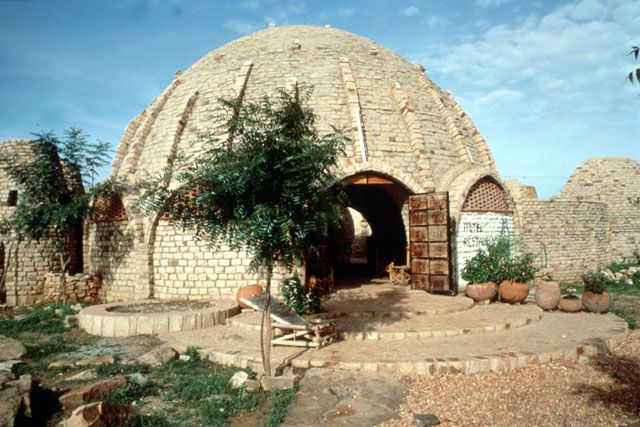
Mud brick domes are strangely stable where they are used. They’ve been extensively tested, because unfired mud bricks are really lousy bricks but have for thousands of years been the most available.
When I say “extensively tested,” I include things like the horrific earthquake in Bam, Iran in 2003. A lot of poorly built traditional housing there collapsed on the sleeping people inside, with a horrendous death toll. But one thing that happened was that different designs behaved differently. The actual mud brick domes were less likely to collapse. This regardless of the fact that the mud bricks they were made of are ready to turn into powder with the slightest shear and did so all over Bam.
The next runner-ups were the mud brick vaults, which are . . . well, arched structures which are not domes (i.e., Quonset-hut shaped buildings, or with the walls as arches, or some other variants - I am writing tired, and I am completely failing to come up with a better description of what a vault is, sorry! And there are also vaulted domes, to make things worse). The thing to say here is that the vaults in Bam failed more than the domes did, and, when the vaults failed, they failed (collapsed) in one of the directions in which they had a flat/vertical side, not in the directions in which they had a curved side.
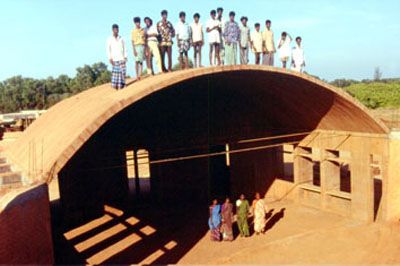
(vault)
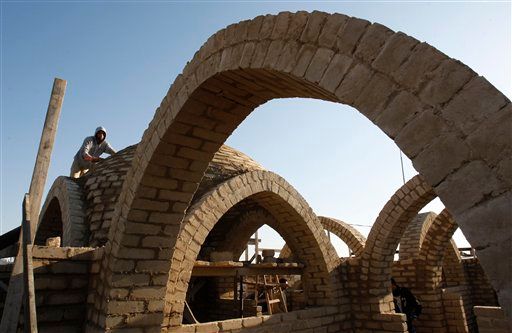
(vaulted domes)
So build actually domishly, if you can. (And I have been grossly oversimplifying, because destruction was general in Bam, and even dome or partly-dome structures failed because of building imperfections and lack of good transfer of forces between elements of the building - possible to do right, but very often not achieved. If you’re in an earthquake zone, unfired mud bricks are not ideal. Were I still in actual introduction-advocacy mode on this idea, I would not have led with the Bam earthquake.)
The deadly Bam earthquake “test” came late on for me, and this geometric stability aspect was not the reason I originally became interested. I became interested for two reasons.
A minor reason was that, with earthships, I was frustrated on principle that you had to go to a more conventional kind of construction to make the roofs. The tires filled with rammed earth were only for the massive walls. With brick domes you could actually make the roof a continuation of the walls.
By far the main reason was just that I was looking for very cheap housing solutions - like $2.50 per square foot or something, if possible (perhaps I should say “or bust”). I was going to say “like something absurd,” but my position was that existing costs are absurd, with attendant ills and social mathematics that follow from them.
And some of the stuff I was reading about intermediate-technology solutions for developing countries had to do with using special hand presses to make compressed-earth bricks.
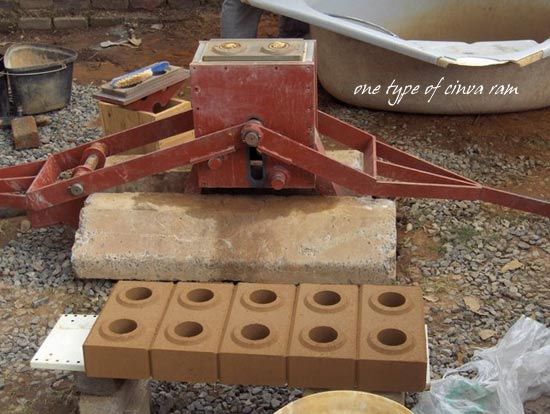
(a CINVA ram)
. . . And I was riveted by the possibility of being able to simply build a home out of . . . the building site! No building materials, or virtually none, needing to be purchased and brought in!
The special dynamics of a dome can make compressed earth bricks make a house. With very little cement mixed into them, or even none!
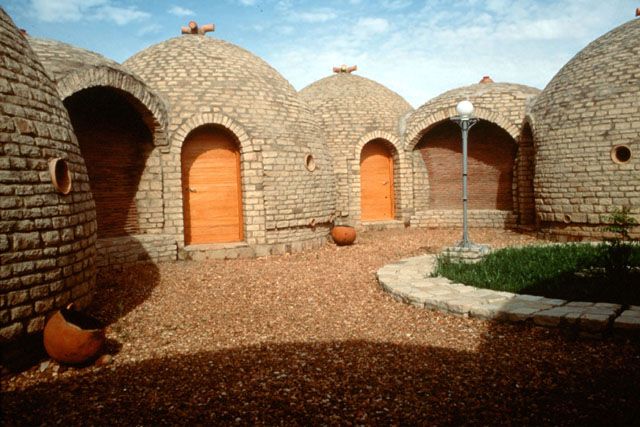

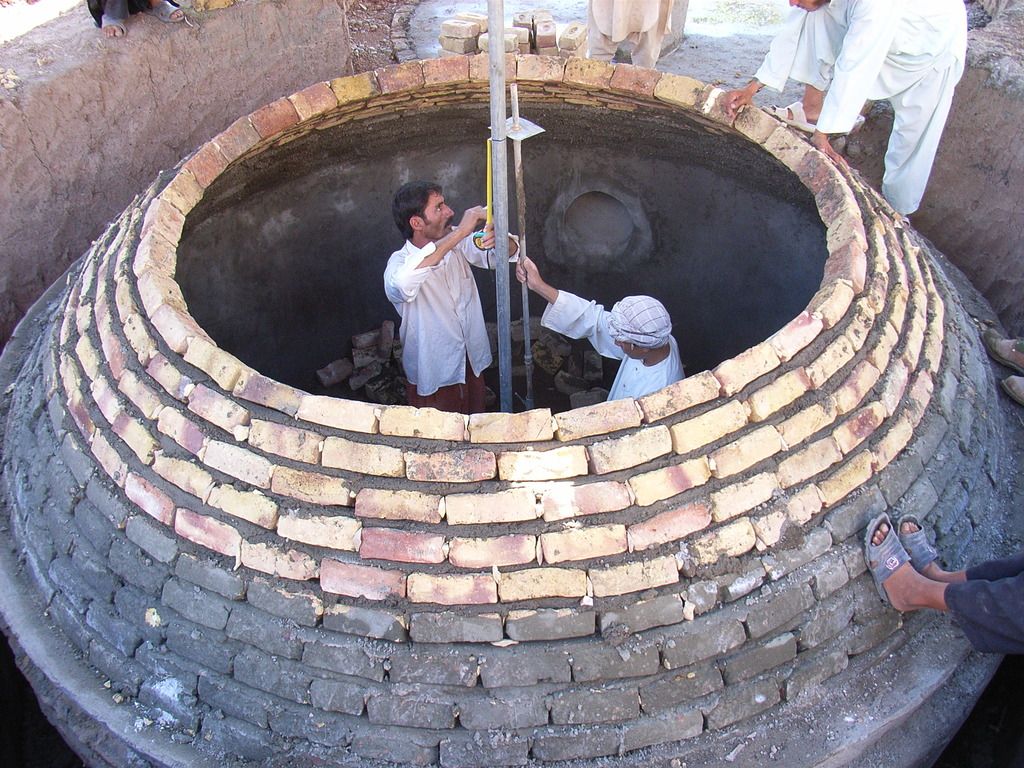
Looking back, I am unsure what to make of my old enthusiasm - or what to discard. Is this a real solution for a real person (somewhere) . . . or does it too easily accept what sounds like a vision of Pharaonic slave labor (but then what sort of build-it-yourself home isn’t hard work?)?
(And if I, personally, built myself a brick dome, would I sleep under it?)
I don’t know which of these lights is good or bad. But I can still find the CINVA-ram. There are people who do use it.
(I do think that my literal vision, “the building site being the materials,” was a bridge too far. I can’t imagine doing the mental calculations, or carrying them out, so that a given space that dirt is being taken from would progressively become a perfectly flat foundation with a complete brick structure upon it. Perhaps a space next to the house could supply the earth.)
I still think that alternate home designs for a natural low cost is a gravely neglected priority. (Conventional home builders are selling something else - and they have strangely little interest in trying to design themselves out of existence, of course.)
My argument for earthen brick dome construction was an argument based, not on the virtues of the particular solution, but on the harshly context-forming nature of the current everyday pattern now. Look at those costs per foot/meter of a home again.
I’m just explaining this because my mention of my interest in earthships looked lonely and incomplete in isolation. :-)
(And if OD were still up I’m certain that I did a full entry on the Dymaxion House back in there, grr . . .)
Note, last minute: I found another short video featuring the inventor of earthships, much more informal (not made by his bunch), with his pungent comments about how destructive “culture” and conventional expectations are, among other topics. It would go with consideration of these other sorts of things too . . .
The Atlantic - “Meet the Earthship”
Last updated June 01, 2016



Loading comments...